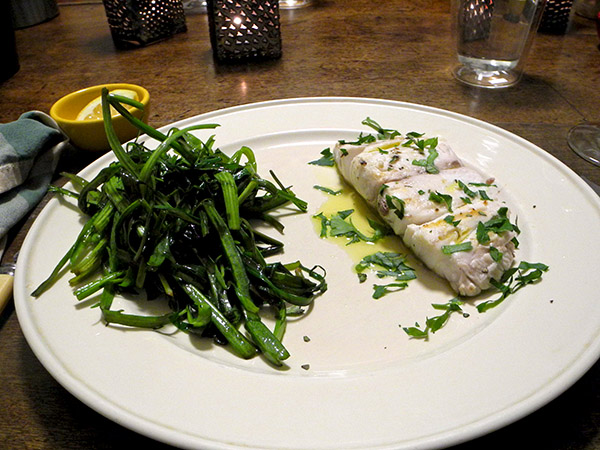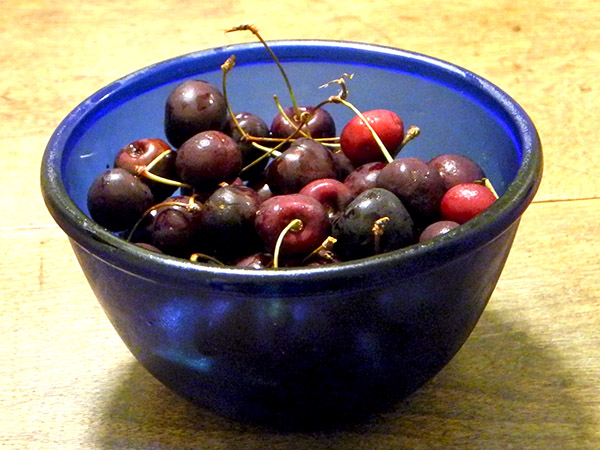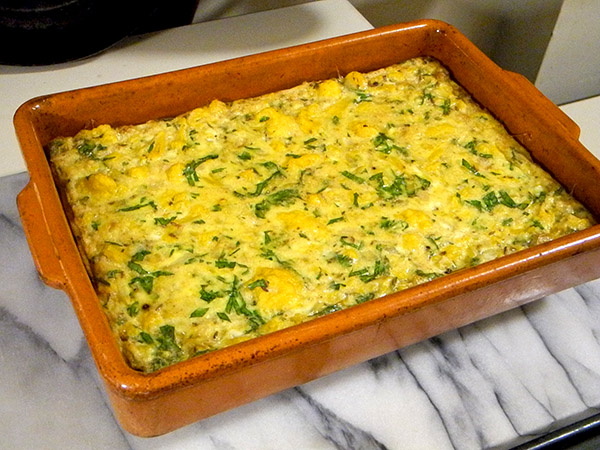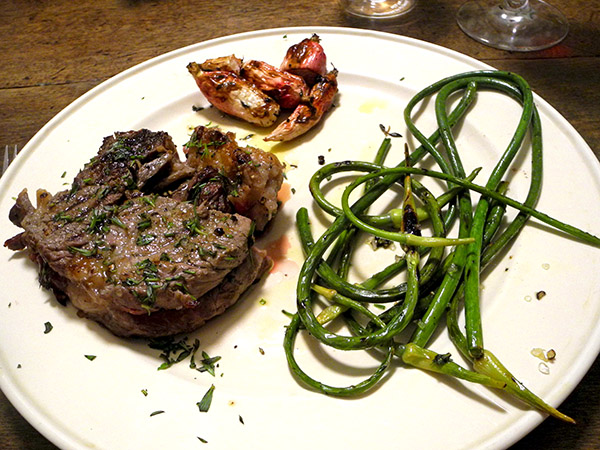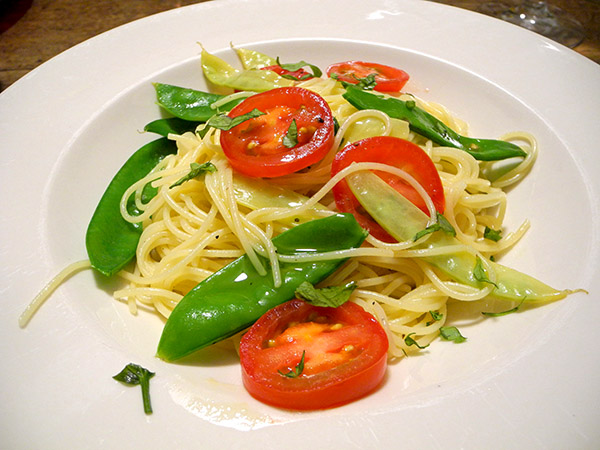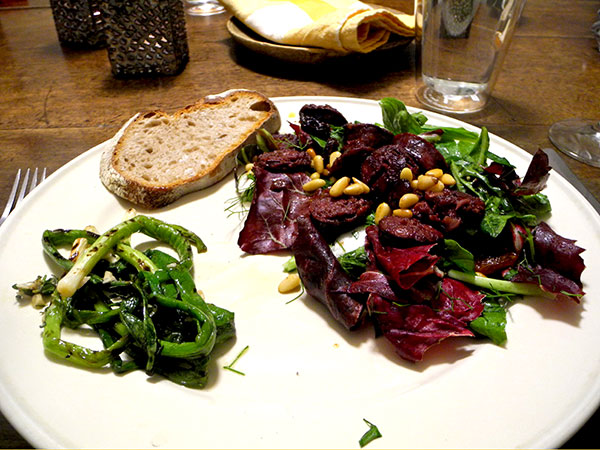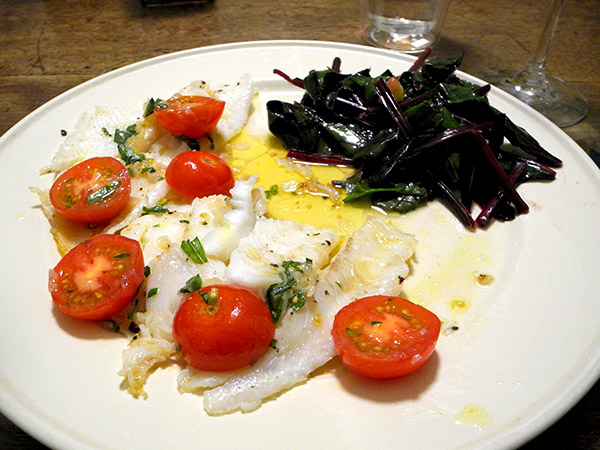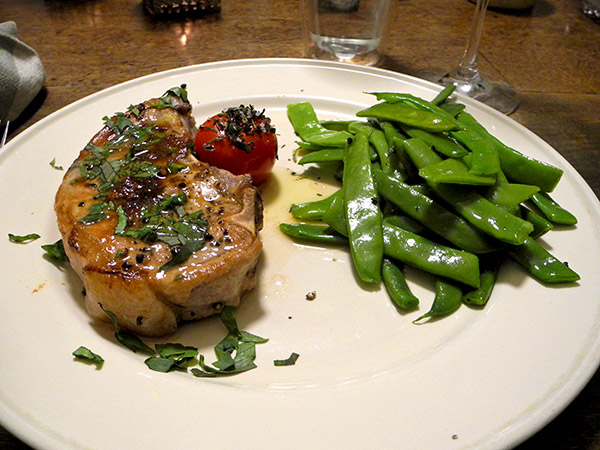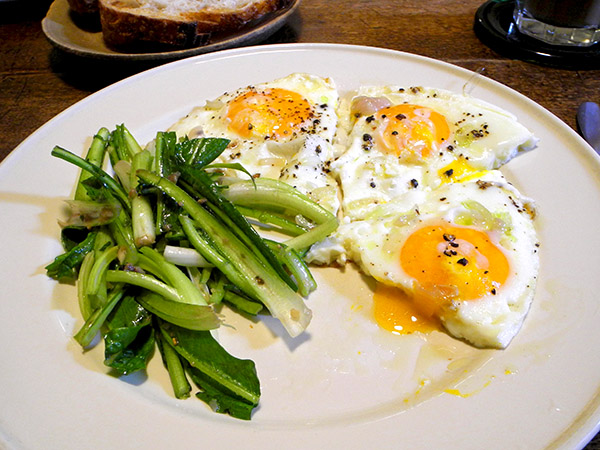
Both courses were pretty Italian.
I often regret that not enough tentacles were included in the bag of cleaned squid I purchase, but this time the balance was totally reversed. I went home with all but the last half pound of the fishmonger’s squid at the Greenmarket on Monday, which may explain both the proportion of tentacles and the diminutive size of both tentacles and bodies. I called it a win, since tentacles add a welcome texture to the mix, and the smaller-size squid bodies themselves have a more delicate texture – and taste – than the larger, and they take almost no time to cook on a grill pan (a boon on a warm summer evening).
The squid was delicious; I think the unusual lemon and the fresh garlic I had on hand had much to do with it.
It was accompanied by a couple handfuls of an Italian green, minutina, which is just beginning to be appreciated in the U.S.
- tiny squid bodies and tentacles from P.E. & D.D. Seafood, marinated for about half an hour in lemon zest and lemon juice of a slightly sweet, organic lemon from Trader Joe’s, thinly-sliced fresh garlic from the Greenmarket, olive oil, dried Italian oregano, salt, and pepper, then removed from the marinade and pan-grilled briefly over high heat, removed and put on plates, sprinkled with juice from the same lemon used in the marinade and some chopped parsley from Stokes Farm [a recipe for the squid, with specific instructions appears here]
- minutina from Norwich Meadows Farm, very cautiously not-quite-wilted in a bit of oil where a clove of the same fresh head of garlic had been heated but not yet begun to brown, the greens seasoned with salt and pepper and some good olive oil
- the wine was an Italian [Sicilian] white, Regaleali Bianco 2013
- the music was a glorious performance of a glorious piece, Haydn’s Piano Trio No. 16 [16 piano trios!], with Emil Gilels, Leonid Kogan, Mstislav Rostropovich
And then there was the dessert.

Not Italian? The utensils. And yes, that really is a (modern) black ‘Fiesta’ bowl; also, a (much older) ‘German silver‘ spoon.
Dessert doesn’t often get a chance to for an appearance on our table, but I try to keep it interesting when it does, and, if possible, relate it to the entrée. In this case I stayed with the Italian theme in at least four of the five elements of the sweet: Blueberries probably didn’t get to Italy from North America until the mid-century, but the gelato, the natural brown sugar, the syrup, and the cookie are definitely Italian in spirit, if not in manufacturing origin.
I apologize for the fact that the contents of the bowl in the image above are a little disarranged; I had already had eaten a spoonful of the dessert before Barry asked if I didn’t want to take a picture.

